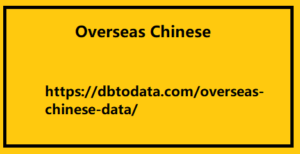Demystifying API Documentation Formats: A Comprehensive Guide to Lightweight Markdown Language
SEO Meta-description: Learn all about API documentation formats using lightweight markdown language. Discover the best practices and tools for creating effective documentation.
Introduction:
In the world of software development, clear and well-structured API documentation is essential for developers to understand and utilize APIs effectively. One of the key factors in creating user-friendly and Demystifying API Documentation comprehensive API documentation is the choice of format. In this article, we will delve into the topic of API documentation formats, focusing on the use of lightweight markdown language such as Markdown or CommonMark. We will explore the benefits of using this format, best practices for creating documentation in markdown, and the tools available to streamline the process.
API Documentation Format: Lightweight Markdown Language
Markdown is a lightweight markup language Overseas Chinese with plain text formatting syntax designed to be easy to read and write. Commonly used for formatting README files and documentation, markdown offers a simple and intuitive way to create structured documents. With its clean and minimalist syntax, markdown allows developers to focus on content creation without getting bogged down in complex formatting.
Advantages of Using Markdown for API Documentation:
Simplicity: Markdown is easy to learn and use, making it accessible to developers of all skill levels. Its straightforward syntax allows for quick and efficient content creation.
Readability: Markdown documents are clean and well-structured

making it easy for developers to scan and understand the information presented. This enhances the overall user experience and Albania Phone Number encourages engagement with the documentation.
Portability: Markdown documents can be easily converted to HTML or other formats, making it versatile and compatible with a wide range of tools and platforms. This flexibility ensures that the documentation remains accessible and functional in various environments.
Version Control: Markdown files can be easily tracked and managed using version control systems such as Git, allowing for collaboration and revision tracking among team members.
Customization: Markdown supports the use of HTML elements and custom styling, providing developers with the flexibility to create visually appealing and informative documentation.
Best Practices for Creating API Documentation in Markdown:
Use Headings and Subheadings: Organize your documentation with clear and descriptive headings to facilitate navigation and comprehension.
Incorporate Code Blocks: Use fenced code blocks to showcase code snippets and examples, making it easier for developers to understand and implement the API.
Include Formatting Options: Utilize markdown features such as lists, tables, bold, and italics to enhance readability and highlight important information.
Provide Clear Instructions: Clearly articulate the purpose of the API, its parameters, and how developers can interact with it. Include detailed examples and use cases to illustrate usage.
Keep it Updated: Regularly review and update your documentation to ensure accuracy and relevance. Address user feedback and incorporate changes as needed to maintain the documentation’s quality.
Conclusion:
Lightweight markdown language such as Markdown or CommonMark offers a user-friendly and versatile solution for creating clear and concise documentation. Embrace the simplicity and flexibility of markdown to create documentation that is informative, engaging, and easy to use.






